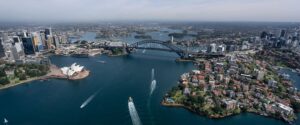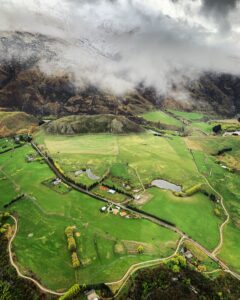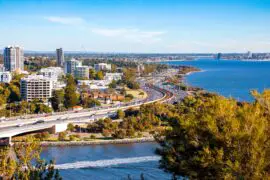Contents
Why is Australia not more populated?
Australia, with its vast landscapes and stunning beauty, holds a rather puzzling secret – it’s not as densely populated as you might expect! Despite being the sixth-largest country on Earth, Australia’s population density is strikingly low. So, what’s the story behind this curious phenomenon? Let’s take a deep dive into the factors that make Australia’s population density stand out in the global crowd.
Australia’s Population Density.
Australia’s wide open spaces and iconic landscapes evoke images of boundless horizons. But did you know that as of June 2020, the Land Down Under has a population density of merely 3.3 people per square kilometer? In comparison, the hustle and bustle of India boast a population density of 464 people per square kilometer, while the United States maintains 36 people per square kilometer.

However, don’t be misled – within the dynamic cities of Australia, like Sydney and Melbourne, the population density springs to life!
Australia’s Bustling Centers
When you wander into the heart of Australia’s urban gems, the picture transforms. Melbourne, a vibrant metropolis, boasts an inner-city population density of a staggering 22,400 people per square kilometer! Meanwhile, Potts Point and Pyrmont, nestled in Sydney’s inner city, flaunt the second-highest population densities in Australia at 16,700 and 16,500 people per square kilometer, respectively.
Still, when pitted against New York City’s bustling streets, where the population density soars over 38,000 people per square kilometer, these numbers reveal a more spacious lifestyle.
Australia’s Harsh Interior
So, what’s the deal with Australia’s overall low population density? The answer lies in its awe-inspiring, yet challenging, interior – the legendary Australian outback. This vast desert expanse presents formidable living conditions, discouraging widespread habitation. While the coastal areas enjoy temperate climates and water aplenty, the heart of Australia remains an arid and inhospitable terrain.
Is Australia better to live in than the USA?
The outback’s harsh climate, with its scorching heat and occasional bushfires, becomes a formidable obstacle to settling down. It’s like a grand adventure where only the bravest dare to tread!

Historical Echoes
Australia’s unique population distribution also echoes the footsteps of its past. The Indigenous peoples, with their deep connection to the land, held sway long before European colonization. The waves of colonization and the transportation of convicts shaped the initial population pattern. This historical backdrop left an indelible mark on Australia’s demographic landscape.
Biodiversity and Space
Australia’s unparalleled biodiversity and environmental preservation efforts play a part in its population dynamics. The quest to safeguard unique ecosystems and protect natural wonders creates a delicate balance between development and preservation. The strict environmental protection laws limit construction and expansion in certain areas, keeping the wild heart of Australia untamed.
Opportunities and Disparities
Economic opportunities weave another thread into Australia’s population narrative. Industries like mining and agriculture drive growth in specific regions, drawing people where prosperity thrives. However, economic disparities play a role, too, influencing the distribution of population across the country.
Why Does Australia’s Population Density Matter?
Now, let’s tackle the burning question – why does Australia’s population density matter? It’s not just a numbers game; it’s a window into a world of considerations:
Urban Planning and Sustainability
Population density holds the key to city planning. It guides the frequency of public transportation, the need for essential services like police stations and supermarkets, and the balance between green spaces and urban development. It’s like a puzzle where every piece needs to fit snugly.

Quality of Life
For those seeking a change of scenery, population density offers insights into the quality of life. Some embrace the city buzz, while others yearn for the tranquility of the Australian bush. It’s about finding where you thrive amidst the vast expanse or the vibrant urban beat.
Job Opportunities and Concentration
Population density and job opportunities go hand in hand. Densely populated areas tend to offer a plethora of career paths, promising more chances to chase dreams. Cities brimming with life often translate to more jobs, presenting a treasure trove for ambitious souls.

Green Spaces and Urban Trade-offs
As cities grow, green spaces diminish. Population density decisions shape the cityscape, determining whether parks flourish or apartment buildings rise. Balancing urban expansion with nature’s embrace becomes a delicate dance.
Urban Sustainability and Future Vision
Australia’s journey towards urban sustainability hinges on understanding population density. Efforts to create self-sufficient cities that prioritize green practices and self-reliance depend on mastering the balance between growth and preservation.
Pros and Cons of urban density
The allure of densely populated cities holds both pros and cons, painting a complex picture:
Benefits of Urban Density
Living amid the hustle and bustle brings perks:
Community Access: Instant connections form, whether for career prospects, friendships, or love. It’s like a social network that thrives in the urban jungle.
Vibrant Lifestyle: Concerts, events, and cultural activities pepper city life. From museums to restaurants, you’re in the center of it all.
Efficient Transportation: Public transport networks thrive, letting you ditch the car in favor of buses, trains, and walkable paths.
Abundant Job Opportunities: City life overflows with job openings, especially for entry-level roles in dynamic industries.
Drawbacks of Urban Density
However, urban density has its shadows:
Pollution Concerns: More people often mean more pollution – air, water, and land bear the brunt. It’s a downside of the city buzz.
Loss of Autonomy: In denser locales, the routine can feel predestined. Working hours, shopping choices, and even daily schedules follow a set rhythm.
Cost of Living: City life comes at a cost – the price tag is high, and real estate comes with a premium.
Overcrowding Worries: Densely populated areas can feel crowded, despite not reaching the density extremes seen in megacities.
Charting a Sustainable Path Forward
Australia’s population density journey is far from over. With ongoing urban sustainability initiatives and the rise of remote work opportunities, the future could hold exciting changes. As cities balance growth and preservation, they’re sculpting a blueprint for harmonious living.
In the end, Australia’s unique population density is a tapestry woven with threads of history, geography, economics, and aspirations. It’s an ongoing saga of adaptation and evolution that shapes the nation’s present and future.
So, next time you marvel at Australia’s expansive beauty, remember that its population density weaves an intricate tale, a testament to the land’s complexity and resilience.





